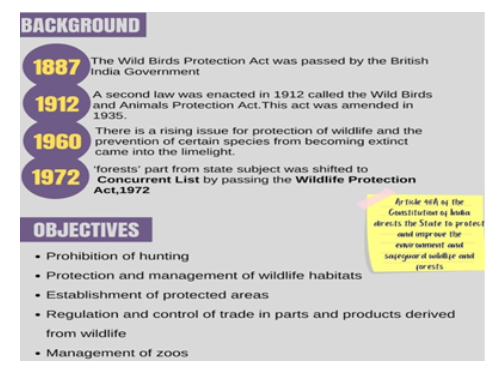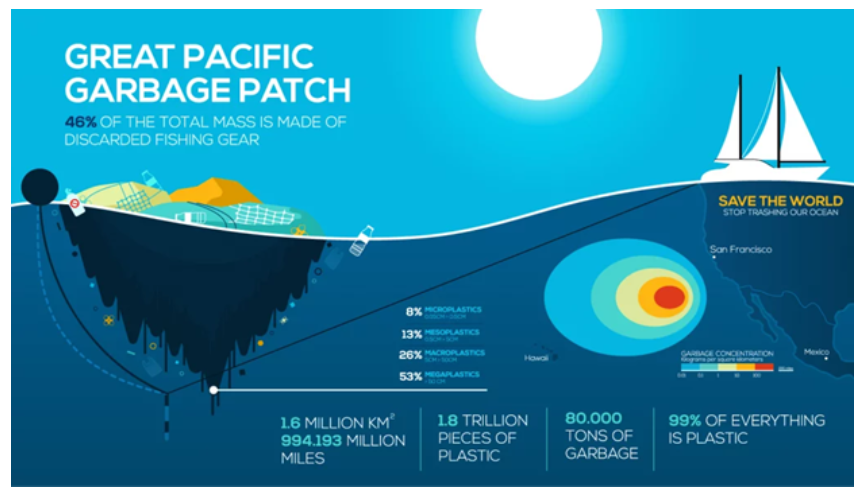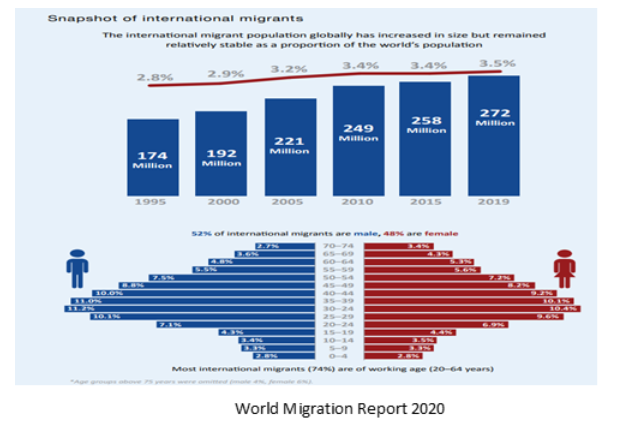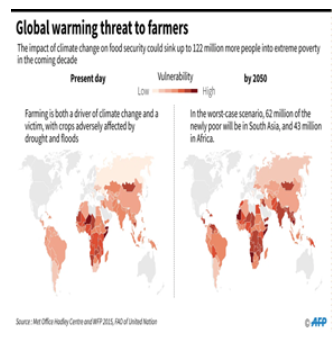10 Feb to 24 Feb, 2024
BLUE ECONOMY 2.0
Why in news : The recent presentation of the Interim Budget included a significant emphasis on advancing Blue Economy 2.0 through the introduction of a novel scheme focused on restoration, adaptation measures, coastal aquaculture, and mariculture, employing an integrated and multi-sectoral strategy.
About :
UNDP defines the blue economy as “the sustainable use of ocean resources for economic growth, jobs and social and financial inclusion, with a focus on preservation and restoration of the health of ocean ecosystems and the services they provide”. This concept recognizes the connection between the natural capital in the ocean and the economic activities and benefits derived of the ocean economy.
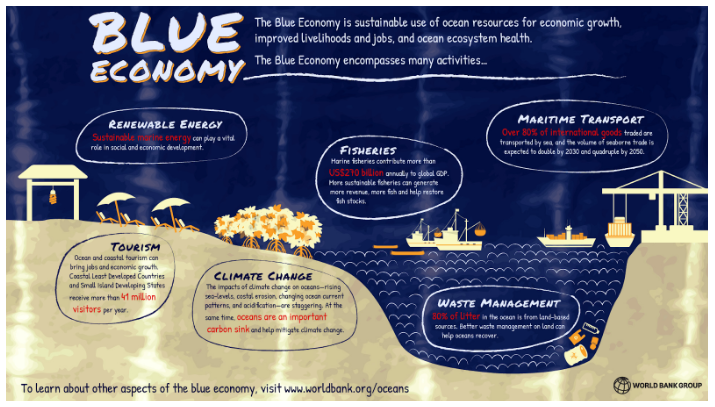
Role of Blue Economy In Sustainable Development
- SDG-14 ( Life Below Water ) : The Blue Economy is integral to achieving SDG 14, which focuses on the conservation and sustainable use of oceans, seas, and marine resources. The State of World Fisheries and Aquaculture 2020" report indicates that sustainable practices have helped 78.7% of marine fish stocks to be fished within biologically sustainable levels.
- Affordable and Clean Energy ( SDG-7 ): The Blue Economy significantly contributes to SDG 7 by advancing renewable energy sources like offshore wind, tidal, and wave energy. IRENA's "Global Renewables Outlook 2020" report suggests that offshore wind could generate more than 420,000 MW by 2050, substantially reducing reliance on fossil fuels and cutting CO2 emissions.
- Decent Work and Economic Growth ( SDG-8 ) : Maritime sectors within the Blue Economy, such as shipping, fisheries, and tourism, are vital for economic growth and employment. The International Labour Organization (ILO) estimates that the ocean economy is responsible for between 31 million and 40 million full-time jobs worldwide.
- Poverty alleviation and food security: The Blue Economy contributes to poverty alleviation and food security (SDGs 1 and 2) by providing livelihoods and nutrition. According to the World Bank, fisheries and aquaculture support the livelihoods of 10-12% of the world's population, demonstrating the significance of sustainable management in these areas for reducing poverty and hunger.
- Climate Action ( SDG-13 ) : Blue carbon ecosystems, including mangroves, seagrasses, and salt marshes, play a crucial role in climate change mitigation by sequestering carbon. Data from the International Union for Conservation of Nature (IUCN) indicate that mangroves can sequester carbon at a rate four times greater than rainforests.
- Industry, Innovation, and Infrastructure ( SDG-9): Innovations in marine technology, particularly in sustainable aquaculture and marine biotechnology, support SDG 9 by fostering more sustainable industrial processes and reducing environmental impacts. Research indicates that marine algae could produce biofuels at a rate of up to 5,000 gallons of ethanol per acre annually, significantly higher than terrestrial biofuel sources.

Global Perspective on Blue economy
The global Blue Economy landscape encompasses a diverse range of sectors that leverage oceanic and coastal resources for economic development, while prioritizing sustainability and environmental preservation.
- Maritime Transport: According to the United Nations Conference on Trade and Development (UNCTAD), around 80% of global trade by volume and over 70% by value is carried by sea.
- Coastal Tourism : The World Travel & Tourism Council (WTTC) notes that coastal and marine tourism accounts for a significant portion of the global tourism industry, supporting over 6.5 million jobs worldwide.
- Renewable Marine Energy : The International Renewable Energy Agency (IRENA) projects that the total installed capacity of offshore wind could reach 228 GW by 2030, up from 29 GW in 2019, showcasing the sector's rapid growth potential.
- Marine Biotechnology : Marine biotechnology represents a promising frontier in achieving sustainability and innovation, particularly in the realms of biofuels, bioplastics, and healthcare. For example, the development of polyhydroxyalkanoates (PHAs) from marine bacteria offers a biodegradable alternative to petroleum-based plastics.
|
CASE STUDY ON BLUE ECONOMY : NORWAY Norwegian Economic Zone and the Fisheries Protection Zone around Svalbard provides a framework for the sustainable use of natural resources and goods derived from the Barents Sea-Lofoten area.
|
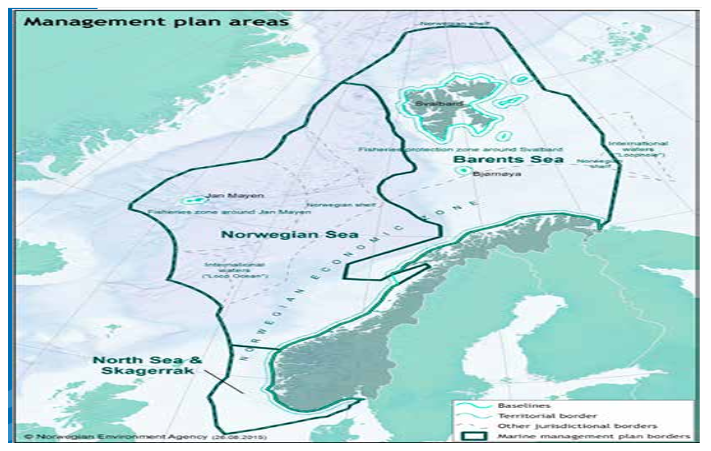
International cooperation and agreements related to the Blue Economy
-
- United Nations Convention on the Law of the Sea (UNCLOS) : Established in 1982, UNCLOS serves as the "constitution of the oceans," providing the legal framework for marine and maritime activities. It delineates national jurisdictions over marine resources, sets rules for navigation, and outlines responsibilities for conserving marine environments.
- UN Treaty on the High Seas : The UN Treaty on the High Seas is an international agreement that aims to protect and sustainably manage marine biodiversity in areas beyond national jurisdiction. These areas, known as the high seas, make up a significant portion of the world's oceans and are vital for supporting marine life and ecosystems.
- The Paris Agreement : By committing nations to limit global warming, the agreement indirectly supports the resilience and sustainability of marine and coastal ecosystems, essential components of the Blue Economy.
- High-level Panel for a Sustainable Ocean Economy (Ocean Panel) : Launched in 2018, the Ocean Panel consists of world leaders committed to developing, catalyzing, and supporting solutions for ocean health and wealth in policy, governance, technology, and finance.
- Global Ocean Alliance and the 30x30 Initiative : Launched by a group of countries, this initiative aims to protect 30% of the world’s ocean by 2030 through the establishment of Marine Protected Areas (MPAs).
- The Pacific Island Forum's "Blue Pacific" identity emphasizes collective action for ocean governance. The African Union's 2050 Africa's Integrated Maritime Strategy (AIMS 2050) seeks to foster more secure and environmentally sustainable maritime governance and economic activities.
Challenges of Blue Economy on Global Scale
- Overfishing and Resource Depletion : The Food and Agriculture Organization (FAO) reports that 34.2% of global fish stocks are fished at biologically unsustainable levels.Example: The collapse of the Newfoundland cod fisheries in Canada during the early 1990s serves as a stark reminder of the consequences of overfishing, leading to the loss of tens of thousands of jobs and severe ecological impacts.
- Pollution and Marine Debris: The Great Pacific Garbage Patch, a massive area in the Pacific Ocean filled with floating plastic debris, showcased the extent of marine pollution and its detrimental effects on the marine ecosystem.
- Climate Change and Ocean Acidification: The Intergovernmental Panel on Climate Change (IPCC) highlights that oceans have absorbed about 30% of emitted anthropogenic CO2, causing ocean acidification..Example: Coral bleaching events, significantly driven by rising sea temperatures, have led to widespread loss of reef ecosystems, with the Great Barrier Reef experiencing severe bleaching in 2016 and 2017.
- Habitat Destruction and Loss of Biodiversity: The World Wildlife Fund (WWF) states that up to half of the world's natural wetlands have been lost in the last century, impacting species diversity and coastal protection.Example: Mangrove deforestation, driven by shrimp farming and coastal development, has not only resulted in biodiversity loss but also diminished natural coastal defenses against storms and erosion.
- Inequitable Economic Benefits: In West Africa, foreign industrial fleets dominate the fishing industry, often at the expense of local small-scale fishers, leading to economic and social disparities.
- Legal and Governance Challenges: The complexity of maritime governance is highlighted by the fact that the United Nations Convention on the Law of the Sea (UNCLOS) involves multiple stakeholders, including over 160 countries, each with their own interests and policies.Example: Disputes over maritime boundaries and fishing rights, such as those in the South China Sea, illustrate the challenges of international maritime governance and the need for cooperative frameworks.
Significance of the Blue Economy for India's growth and development
The Blue Economy holds significant potential for India, offering numerous benefits across various sectors.
Maritime Trade and Shipping
- Extensive Coastline and Port Infrastructure: With a coastline extending over 7,500 km, India hosts 12 major and over 200 minor ports, underpinning a vast maritime trade network.
- Critical for Trade: Maritime transportation is vital, with over 95% of India's trading volume being seaborne, contributing approximately 4% to the national GDP.
- Industry Expansion Opportunities: The maritime sector presents opportunities for growth in ship repair, maintenance, and other ship-based industries.
Renewable Energy Development
- Meeting Energy Demand: The pursuit of the Blue Economy enables the development of marine renewable energy sources, including offshore wind and solar power.
- Energy Targets: As per the Ministry of Power, India aims for an energy capacity of over 800 GW by 2030, with more than 500 GW from non-fossil sources, where ocean-based energy could play a crucial role.
Livelihood and Employment
- Fisheries Sector: India ranks as the world's second-largest fish producer, supporting over 4 million fishermen and coastal communities in 9 coastal states.
Economic Growth
- Contribution to GDP: The Blue Economy currently contributes nearly 4% to India's GDP, with potential to significantly aid in achieving a $10 trillion economy by 2032.
- Pandemic Resilience: Despite global challenges, India's Blue Economy demonstrated resilience, recording exports worth $7.2 billion between April 2021 and February 2022.
Strategic Significance
- Geographical Advantage: India's strategic location near key maritime routes, such as the Strait of Malacca and the Strait of Hormuz, is vital for oil and gas transport, enhancing its influence in the Indian Ocean.
Fulfilling International Commitments
- Sustainable Goals: India is committed to SDG 14, which focuses on the sustainable use of marine resources, aligning with broader goals to eradicate poverty and hunger.
- Climate Actions: Under the INDC targets set at the Paris Summit, India aims to increase its carbon sinks by 2.5 to 3 billion tonnes of CO2 and reduce the GHG emission intensity of its GDP by 33 to 35% from 2005 levels by 2030, with sustainable energy generation from the Blue Economy contributing to these objectives.
Government initiatives and policies supporting the Blue Economy
- Sagarmala Project: Aims to reduce logistics costs via port modernization, new port development, and enhanced port connectivity.
- Deep Ocean Mission: Focuses on exploring and sustainably using deep-sea resources, developing technology for mining and biodiversity conservation.
- O-SMART: Supports ocean research, development, and early warning systems.
- Integrated Coastal Zone Management Project: Enhances coastal management in Gujarat, Odisha, and West Bengal.
- India-Norway Task Force: Collaborates on sustainable Blue Economy development.
- National Fisheries Policy-2020: Consolidates fisheries policies for comprehensive sector management.
- Pradhan Mantri Matsya Sampada Yojana: Aims to boost the fisheries sector under the Atmanirbhar Bharat initiative.
- NavIC: Satellite-based navigation to support Blue Economy activities.
- Mining of Polymetallic Nodules: Authorized by the International Seabed Authority for deep-sea mining in the Central Indian Ocean Region.
- Swachh Sagar, Surakshit Sagar Campaign: Aims to clean 75 beaches, marking ‘International Coastal Cleanup Day’.
Role of technology in advancing the Blue Economy
- Ocean Observation and Data Analysis: Satellite imagery and underwater sensor networks improve ocean monitoring, crucial for climate change studies, disaster risk management, and marine conservation. The European Space Agency (ESA) operates the Copernicus program, providing vital data for marine environment monitoring and management.
- Autonomous and Remote-operated Vehicles (AUVs and ROVs): The National Oceanography Centre (NOC) has deployed AUVs to explore and study remote ocean areas, demonstrating their value in scientific research and commercial applications.
- Desalination Technology: Advances in desalination, including reverse osmosis and solar desalination, offer sustainable solutions to freshwater scarcity. According to the International Desalination Association, there were over 18,426 desalination plants worldwide as of 2019, highlighting their role in addressing water security.
- GIS and Spatial Planning Tools: Geographic Information Systems (GIS) support marine spatial planning (MSP), crucial for managing marine resources efficiently. The United Nations Environment Programme (UNEP) emphasizes MSP as a key tool for sustainable ocean management, facilitating the balance between resource use and conservation.
- Fisheries Management Tools: Technology-driven solutions, such as electronic reporting systems and satellite-based vessel monitoring, enhance sustainable fisheries management.
Conclusion
The Blue Revolution represents a pivotal shift towards sustainable management and utilization of aquatic resources, ushering a new era of economic prosperity, environmental preservation, and social inclusivity. Through innovative practices in fisheries, aquaculture, renewable energy, and marine biotechnology, the Blue Revolution offers a holistic approach to addressing the pressing challenges of food security, energy sustainability, and climate change. The journey towards a sustainable Blue Economy is complex and requires concerted efforts from governments, industry, academia, and civil society. However, by embracing the opportunities presented by the Blue Revolution, we can forge a path to a more sustainable, prosperous, and equitable world.
Where to use :
Paper II ( Geography Optional ) : Agriculture and allied activities
Paper III ( General Studies ) : Blue revolution and fisheries
Source :
ATLANTIC MERIDIONAL OVERTURNING CIRCULATION
Why in news : The Atlantic Meridional Overturning Circulation (AMOC) is at risk of imminent collapse, with recent studies indicating that anthropogenic emissions could expedite this between 2025 and 2095.
About :
The Atlantic Meridional Overturning Circulation (AMOC) is a major ocean current system that redistributes warm surface waters from tropical regions to the north and returns cold, deep waters southward towards the equator. This circulation plays a vital role in global heat distribution, impacting regional and global climate patterns, notably moderating temperatures in Europe, North America, and equatorial areas.
Mechanism:
- Warm Water Transport: The AMOC carries warm, salty waters from the tropics to northern latitudes, transferring heat energy and warming areas like Europe.
- Cooling and Density Increase: As these waters move poleward, they cool down and mix with fresh, cold water from Arctic ice melt, increasing their density.
- Downwelling: The dense, cold water sinks in the North Atlantic, initiating the AMOC's deep limb that flows southward along the ocean floor, redistributing heat and nutrients.
- Southward Flow and Resurfacing: This cold, dense water travels south, eventually resurfacing and warming, thus completing the AMOC cycle.

Role of the Indian Ocean:
- Rapid warming of the Indian Ocean increases precipitation, pulling air from other regions, including the Atlantic.
- This results in reduced precipitation and higher salinity in the Atlantic's tropical zone, making the water denser and quicker to sink in the north, potentially intensifying the AMOC.
Contribution to Global Climate:
- The AMOC functions as a global heat conveyor belt, warming northern latitudes and cooling southern ones, crucial for Earth's climate stability.
Threat:
- Increased precipitation and Greenland's ice melt are injecting fresh water into the North Atlantic, reducing salinity and density, thereby expanding the colder layer and shrinking the warmer one. This is slowing the AMOC, with risks of a complete halt, further exacerbated by human-induced climate change impacting ocean temperatures and currents.
Potential Cascading Effects:
- A collapse could shift precipitation patterns, threatening ecosystems like the Amazon rainforest and accelerating ice melt in the West Antarctic, raising sea levels. Additionally, it could weaken monsoon systems in South Asia and Africa, affecting agriculture, water resources, and regional climates.
Where to use :
Paper I ( Geography Optional ) : Ocean Currents and its impact
Source :
ATMOSPHERIC RIVERS
Why in news : California, US is currently grappling with an extraordinary weather phenomenon known as an Atmospheric River also called Pineapple Express Storm, which has the potential to unleash up to 8 trillion gallons of rain over the state.
About :
- Atmospheric rivers are extensive, slender streams of moisture-laden air that convey substantial quantities of water vapor from tropical regions toward higher latitudes.
- These meteorological phenomena are typically linked with Maritime Tropical (mT) air masses. Upon reaching land, these atmospheric rivers unload their moisture in the form of heavy precipitation, which may take the form of rain or snow depending on the local altitude and temperature conditions.
- The National Oceanic and Atmospheric Administration (NOAA) notes that the volume of water vapor transported by these atmospheric rivers is comparable to the mean discharge of the Mississippi River at its estuary. Consequently, when they come ashore and discharge their moisture content, they can lead to severe flooding.
PINEAPPLE EXPRESS
- The "Pineapple Express" is a notable instance of atmospheric river events that deliver substantial rainfall to the Western United States, especially California.
- The term "Pineapple Express" derives from these storms' tendency to pull moisture from the tropical regions near the Hawaiian Islands, akin to a rapid moisture "express" service originating near Hawaii, a location commonly linked with pineapples.
- Propelled by a vigorous southern segment of the polar jet stream, this atmospheric river moves moist, warm Maritime Tropical (mT) air from the vicinity of the Hawaiian Islands.

Categories
- Category 1 (Weak): A Category 1 atmospheric river represents a gentler, shorter weather phenomenon predominantly yielding positive outcomes, such as a day of light rainfall.
- Category 2 (Moderate): A moderate storm, Category 2 atmospheric river mostly has beneficial impacts, though it carries some risks.
- Category 3 (Strong): Category 3 atmospheric rivers are intense and more enduring, offering a mix of positive and negative effects. For instance, such a storm could deliver 5-10 inches of rainfall over 36 hours, aiding in the replenishment of water reservoirs while also bringing some rivers near to flooding.
- Category 4 (Extreme): Primarily detrimental, a Category 4 atmospheric river can also have advantageous effects. Such storms can produce intense rainfall over a few days, causing several rivers to reach flood levels.
- Category 5 (Exceptional): A Category 5 atmospheric river is overwhelmingly harmful.
- During the 1996-97 New Year holiday period, an atmospheric river lasting over 100 hours along the Central California coast resulted in heavy rainfall and runoff, leading to damages exceeding USD 100 billion.
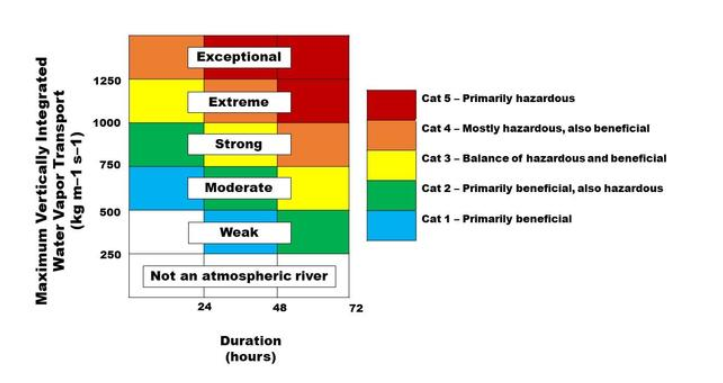
SIGNIFICANCE
- Atmospheric rivers are vital for the replenishment of water reserves, especially in areas such as the western United States, where their substantial rainfall plays a significant role in boosting reservoir levels, mitigating drought effects, and securing water for farming, industry, and household needs.
- Recognizing the significance of atmospheric rivers is critical for the effective management and planning of water resources. This involves strategies for conserving water, managing floods, and distributing water to satisfy diverse needs.
- By transferring vast quantities of water vapor from the tropics to higher latitudes, atmospheric rivers are instrumental in sustaining the hydrological cycle's equilibrium.
- They facilitate the movement of moisture to various regions, thereby nurturing ecosystems and enhancing agricultural yields.
HOW COMMON ARE ATMOSPHERIC RIVERS AND WHERE DO THEY OCCUR ?
- Their occurrence is not confined to the US West Coast; atmospheric rivers have a global presence. These elongated moisture streams can extend for thousands of miles, impacting areas including the UK, Ireland, Norway, and China.
- In China, atmospheric rivers intensify the rainy season, also referred to as the Mei-Yu season.
- Although they constitute only 17% of the US West Coast's storms, atmospheric rivers play a crucial role in California's rainfall, snowpack accumulation, and significant flooding events. Their predictability allows for their forecasting up to a week before they happen.
Where to use :
Paper I ( Geography optional ) : Climatology
Source :
https://www.theguardian.com/us-news/2024/jan/31/severe-storms-california-flash-flooding-risk
Carbon fixation Pathway
Carbon fixation Pathway : It is a biosynthetic pathway that converts atmospheric carbon into organic compounds. During photosynthesis, plants use ATP and NADPH to assimilate carbon dioxide and form carbohydrates. The carbon fixation cycle is also called the Calvin cycle, named after Melvin Calvin who first identified it. The Calvin cycle has three stages: carboxylation, reduction, and regeneration.
Photorespiration
Photorespiration : Photorespiration (also known as the oxidative photosynthetic carbon cycle or C2 cycle) refers to a process in plant metabolism where the enzyme RuBisCO oxygenates RuBP, wasting some of the energy produced by photosynthesis.
Kelp Forest
Kelp Forest : Kelp forests are underwater areas with a high density of kelp, a large brown algae that grows in cool, shallow waters. Kelp forests are one of the most productive and dynamic ecosystems on Earth, covering 25% of the world's coastlines. Kelp Forests are always coastal and require shallow, reasonably clear water. They cling to the seafloor and eventually grow to the surface and rely on sunshine to produce food and energy.
Bioindicator
Bioindicator : Bioindicators are living organisms such as plants, plankton, animals, and microbes, which are used to assess the health of the natural ecosystem in the environment. Examples of Bioindicators:Lichens are powerful Bioindicators of air quality,Frogs are basically influenced by changes that take place in their freshwater and terrestrial habitats.
Algal bloom
Algal bloom : “An algal bloom can be defined as a rapid increase in the population of algae in an aquatic ecosystem.” Algal blooms can be found in either a marine environment or a freshwater environment. The phenomenon can be easily recognised by the discolouration on the surface of the water. It usually occurs due to the introduction of a nutrient (such as nitrogen or phosphorus) into an aquatic ecosystem.
CLIMATE CHANGE OVER HINDU KUSH HIMALAYAS
The report from the International Centre for Integrated Mountain Development (ICIMOD) reveals that glaciers in the Hindu Kush Himalayan region are diminishing at a rate 65% more rapid than previously observed. It is anticipated that water levels in the Indus, Ganges, and Brahmaputra rivers will rise until 2050 in the near term, but will significantly decline, by approximately 80%, by the year 2100. Moreover, climate change is having a profound impact on the region's biodiversity; for instance, the living area for the Himalayan ibex is expected to shrink by 33 to 64%.
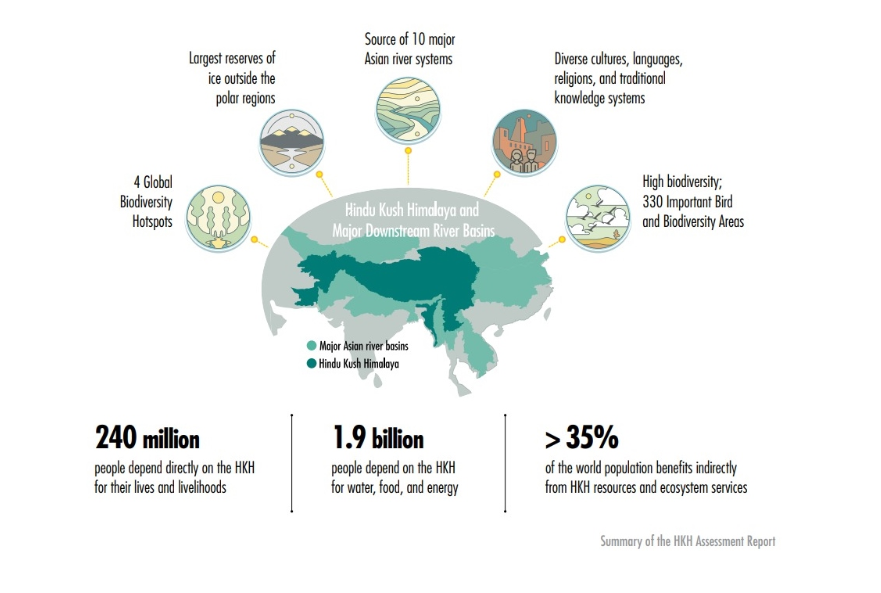
Where to use :
Source :
Paper III ( General Studies ) : Environment
Paper II ( Geography Optional ) : Global warming and climatic impacts
Paper I ( General Studies ) : Impact of climate on flora and fauna
Places in News - 24 February 2024
1. Villupuram
Why in news : As part of the Ek Bharat Shreshtha Bharat (EBSB) initiative, students immersed themselves in sustainable living during the Auroville Exposure Tour.
- Auroville is a universal township in the making for a population of up to 50,000 people from around the world.
- It is located in Viluppuram district of Tamil Nadu (some parts are in Puducherry).
- The city administration is focusing on sustainable living and addressing the future cultural, environmental, social, and spiritual needs of humanity.
- Approx . Cuddalore
2. Koteshwar
Why in news : Recently, the National Conference on Promotion of Seaweed Cultivation was held in Koteshwar (Kori Creek), Kutch, Gujarat.
- Koteshwar is a small village and the location of an ancient Shiva temple.
- It located near the mouth of Kori Creek, in the west of Kutch district of Gujarat, India.
- It is 178 km from Bhuj, district headquarters of Kutch and only 4 km towards the north-west of Narayan Sarovar, another ancient Hindu pilgrimage site.
- Approx. Bhuj
3. Rayagada :
Why in news : Recently Lanjia Saura Painting of Rayagada have received the Geographical Indication (GI) tag.
- Rayagada district is a district in southern Odisha, a state in India, which became a separate district in October 1992.
- Its population consists mainly of tribes, primarily the Khonds and the Soras.
- In addition to Odia, Kui and Sora are spoken by the district's indigenous population.
- It was founded by Maharajah Biswanatha Deba Gajapati of the Surjyabansha dynasty of Jeypore
- Approx. Berhampur
4. Ankasamudra Bird Conservation Reserve
Why in news : The site is recently introduced in the list of Ramsar sites
- It is the first bird conservation reserve in the North Karnataka or Kalyan Karnataka region.
- There are 175 species (of bird)and even 11 species from the International Union for Conservation of Nature Red List in and around Ankasamudra.
- Approx. Hampi
5. Kulgam :
Why in news : A recent study has shed light on the presence of over 100 active permafrost structures near Himalayas in Kulgam.
- It is a district in the Kashmir division and is located at a distance of 18 kilometres (11 mi) towards south-west of Anantnag.
- River Veshaw, which drains most of the northern face of Pir Panjal, is the main left-bank tributary of the Jhelum River and traverses through district Kulgam.
- Approx : Anantnag
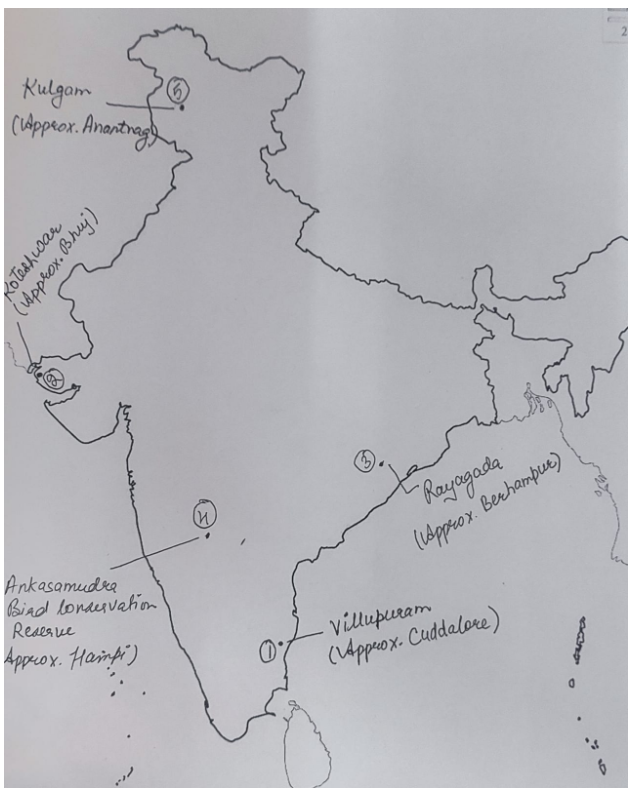
Fortnightly KOSMOS MCQ Practice
Q1. With reference to the Majuli Island, consider the following statements:
- This island is situated in Arunachal Pradesh.
- It holds the distinction of being the world's second-largest river island.
- Encircled by the Brahmaputra River and its subsidiaries, it stands as a significant geographical feature.
How many of the above statements are correct?
- Only one
- Only two
- Only three
- None
Q2. With reference to the Denotified, Nomadic, and Semi-Nomadic Tribes, consider the following statements:
- They are also referred to as Vimukt Jatis.
- These communities were officially removed from the notified list by the Indian Government in 1972.
- They constitute approximately 20% of India's population.
How many of the above statements are correct?
- Only one
- Only two
- Only three
- None
Q3. Consider the following :
Statement-I: Located in the Western Pacific Ocean, the South China Sea is a marginal sea that shares its borders with several countries including Brunei Darussalam, Malaysia, Indonesia, and the Philippines, among others.
Statement-II: The South China Sea links to the Philippine Sea through the Taiwan Strait and to the East China Sea via the Luzon Strait.
Which one of the following is correct in respect of the above statements?
- Both Statement-I and Statement-II are correct, and Statement-II is the correct explanation for Statement-I.
- Both Statement-I and Statement-II are correct, and Statement-II is not the correct explanation for Statement-I.
- Statement-I is correct, but Statement-II is incorrect.
- Statement-I is incorrect, but Statement-II is correct.
Q4. Consider the following :
Statement-I: Acid rain represents a multifaceted environmental challenge, characterized by various origins and extensive impacts.
Statement-II: The combustion of fossil fuels, which emits sulfur dioxide (SO2) and nitrogen oxides (NOx) at elevated temperatures, is among the primary contributors to acid rain.
Which one of the following is correct in respect of the above statements?
- Both Statement-I and Statement-II are correct, and Statement-II is the correct explanation for Statement-I.
- Both Statement-I and Statement-II are correct, and Statement-II is not the correct explanation for Statement-I.
- Statement-I is correct, but Statement-II is incorrect.
- Statement-I is incorrect, but Statement-II is correct.
Q5. With reference to the Snow Leopard Population Assessment in India (SPAI) Program, consider the following statements:
- The SPAI Initiative encompasses comprehensive activities such as intensive camera trapping, genetic analysis, and evaluations of habitat across different snow leopard territories in India.
- The Forest Research Institute (FRI) functioned as the National Coordinator for the SPAI, receiving backing from states within the snow leopard's range and from allies in conservation efforts.
Which of the statements given above is/are correct?
- Only 1
- Only 2
- Both 1 and 2
- Neither 1 nor 2
Q6. Consider the following statements:
Statement-I: Initiated in 2008, the National Action Plan on Climate Change (NAPCC) is designed to promote a development pathway for India that is both low in carbon emissions and resilient to climate change, with its foundation built on 10 national missions.
Statement-II: Committed through its Nationally Determined Contributions (NDCs), India aims to cut the emissions intensity of its GDP by 45% by the year 2030, relative to 2005 levels, and to produce half of its electricity from renewable non-fossil fuel sources by the same year.
Which one of the following is correct in respect of the above statements?
- Both Statement-I and Statement-II are correct, and Statement-II is the correct explanation for Statement-I.
- Both Statement-I and Statement-II are correct, and Statement-II is not the correct explanation for Statement-I.
- Statement-I is correct, but Statement-II is incorrect.
- Statement-I is incorrect, but Statement-II is correct.
Q7. Consider the following statements with respect to ‘Seaweeds’:
- They are referred to as the 'Medical Food of the 21st Century
- The large seaweeds create expansive underwater ecosystems called kelp forests and serve as vital breeding grounds for various marine life, including fish, snails, and sea urchins.
- They function as bio-indicators, capturing surplus nutrients and indicating chemical disturbances in the marine environment.
How many of the above statements are not correct?
- Only one
- Only two
- Only three
- None
Q8. Consider the following pairs:
|
Ramsar Site |
State |
|
1. Aghanashini Estuary |
(a). Tamil Nadu |
|
2. Karaivetti Bird Sanctuary |
(b). Karnataka |
|
3. Longwood Shola Reserve Forest |
(c). Kerala |
Which of the pairs given above is/are correctly matched?
- 1 only
- 1 and 2 only
- 2 and 3 only
- 1, 2 and 3
Q9. Consider the following statements:
Statement-I: Identified in 1990, the Dusted Apollo butterfly's habitat spans from Eastern Europe to the mainland of China.
Statement-II: This butterfly belongs to the snow Apollo genus within the swallowtail family.
Which one of the following is correct in respect of the above statements?
- Both Statement-I and Statement-II are correct, and Statement-II is the correct explanation for Statement-I.
- Both Statement-I and Statement-II are correct, and Statement-II is not the correct explanation for Statement-I.
- Statement-I is correct, but Statement-II is incorrect.
- Statement-I is incorrect, but Statement-II is correct.
Q10. Consider the following statements:
- Di-Ammonium Phosphate (DAP) fertilizer, which is composed of 18% Nitrogen and 46% Phosphorus, is produced through the chemical reaction of Ammonia with Phosphoric acid.
- The Indian Farmers Fertiliser Cooperative (IFFCO) introduced a Nano DAP variant, which has a nutrient composition of 8% Nitrogen and 16% Phosphorus by volume.
Which of the statements given above is/are correct?
- Only 1
- Only 2
- Both 1 and 2
- Neither 1 nor 2
Q11. Consider the following:
Statement-I: The Royal Bengal Tigers in Similipal possess a unique genetic makeup that results in higher melanin concentrations, creating a mix of black and yellow stripes. This phenomenon is known as pseudo-melanism.
Statement-II: Melanism refers to a genetic trait that triggers an overproduction of melanin, resulting in animals having black or nearly black skin, feathers, or fur.
Which one of the following is correct in respect of the above statements?
- Both Statement-I and Statement-II are correct, and Statement-II is the correct explanation for Statement-I.
- Both Statement-I and Statement-II are correct, and Statement-II is not the correct explanation for Statement-I.
- Statement-I is correct, but Statement-II is incorrect.
- Statement-I is incorrect, but Statement-II is correct.
Q12. Consider the following statements regarding the Sea Cows :
- Dugongs are found in areas including the Caribbean, Gulf of Mexico, Amazon, and the eastern and western coasts of Africa.
- Manatees, on the other hand, are residents of coastal waters in the Indian and Pacific Oceans.
- According to the IUCN, both dugongs and manatees are listed as vulnerable species.
How many of the above statements are correct?
- Only one
- Only two
- Only three
- None
Q13. With reference to the Convention on Biological Diversity (CBD), consider the following statements:
- This treaty, aimed at the conservation of biodiversity, became legally enforceable in 1972.
- India implemented the Biological Diversity Act in 2002 to comply with the Convention on Biological Diversity (CBD).
- The Secretariat of the CBD is located in Montreal, Canada.
Which of the statements given above is/are correct?
- 1 and 2 only
- 2 and 3 only
- 1 and 3 only
- 1, 2 and 3
Q14. Consider the following statements
- Kumki elephants undergo training to help manage conflicts between humans and elephants, particularly in instances where wild elephants venture into areas populated by humans.
- On the IUCN Red List, the Asian elephant is listed under the "Endangered" category.
Which of the statement(s) given above is/are correct?
- 1 only
- 2 only
- Both 1 and 2
- Neither 1 nor 2
Q15. What distinctive feature differentiates the Golden Tiger from other subspecies of tigers?
- Unique golden fur coloration
- Greater size relative to other subspecies of tigers
- Adapted to living in high-altitude mountainous areas
- Capable of hibernating through severe winter conditions
Share the article
Edukemy’s Current Affairs Quiz is published with multiple choice questions for UPSC exams
MCQ
Get Latest Updates on Offers, Event dates, and free Mentorship sessions.

Get in touch with our Expert Academic Counsellors 👋
FAQs
Geography Current Affairs focuses on the contemporary issues, events, and developments in the field of geography. It covers recent geographical phenomena, environmental changes, geopolitical shifts, and related news. This differs from regular geography studies which may focus more on foundational concepts, historical contexts, and theoretical frameworks.
Updates are provided regularly to ensure that subscribers stay informed about the latest developments in geography. Typically, updates are provided on a fortnightly basis, depending on the frequency of significant events and changes in the field.
Absolutely. Geography Current Affairs serves as a valuable resource not only for Geography optional but also for GS papers, especially GS Paper 1 (covering Indian Heritage and Culture, History, and Geography of the World and Society) and GS Paper 3 (covering Technology, Economic Development, Biodiversity, Environment, Security, and Disaster Management). It aids in building a holistic understanding of various topics and strengthens answer-writing skills by incorporating contemporary examples and perspectives.
Geography Current Affairs holds immense importance for UPSC preparation, particularly for aspirants opting for Geography optional. It helps candidates stay updated with the latest developments, geographical phenomena, environmental issues, and geopolitical shifts worldwide, aligning them with the dynamic nature of the subject as tested in the UPSC examinations.

